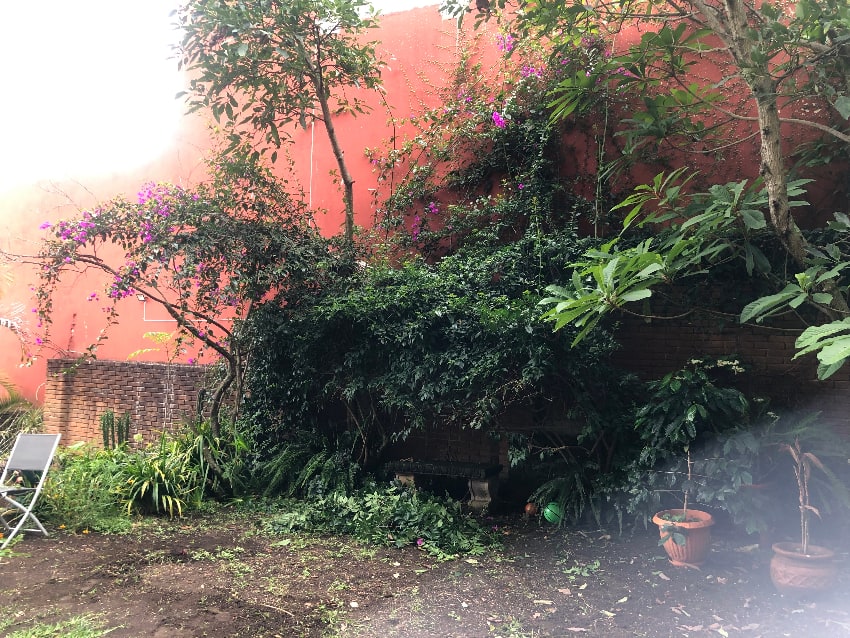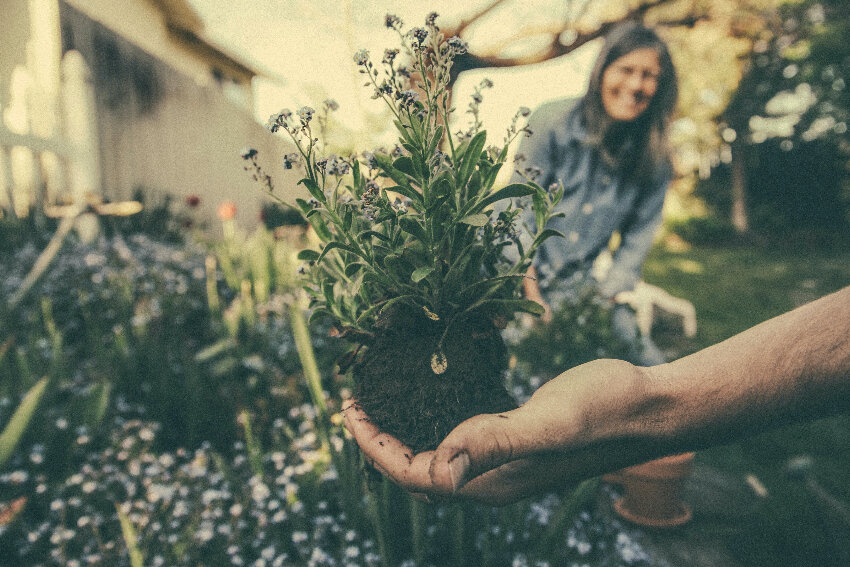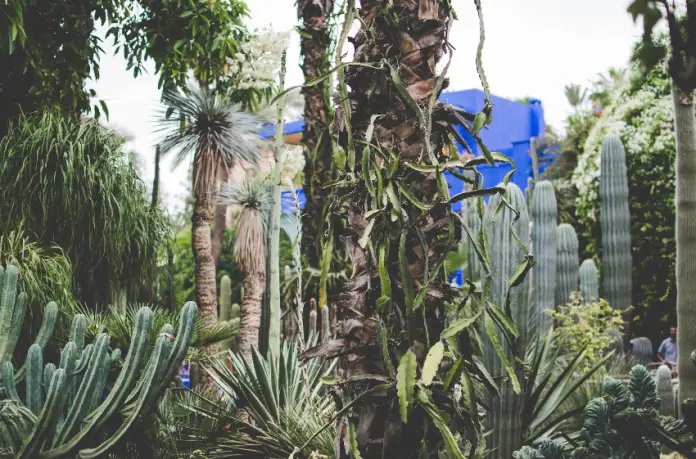I’ve just fought and won – for now – a battle against some very aggressive bougainvillea.
Before this past year, I’d loved and admired the plant: those look-at-me fuchsia flowers, the way it makes even the sketchiest of neighborhoods look like they’re spilling over in extravagant lushness. A tea made from its flowers is also supposed to help if you have a cough!
But as I discovered since moving into a house with the biggest yard I’ve had in Mexico, bougainvilleas are all-terrain, and it’s easy for them to get out of hand.
They grow easily and rapidly, stretch out, and take over wherever they can if planted in the ground. Their thorns are as sharp as switchblades and about as sturdy.
Before I knew it, four of them had turned into actual trees—big ones.

After trying in vain to prune them down myself, I was mercifully put back into contact with the gardener who’d helped me at the previous place I lived, who helped cut them down and find someone with a giant truck to haul off the “green trash.”
I’m a little poorer now, but my garden is free of spikey things that could poke holes in my kid and her small guests.
And now I’ve got space to add new plants!
Before this year, I’d never given much thought to the plants with which I share my living space beyond their ornamental or useful values. (Typical human, amiright?)
But now that I’m the steward of a kind of gigantic (for Mexico) piece of land, I want to do things right. I feel guilty for the purposeful demise of my yard’s spikey plants and want to do right by nature.
A conversation with my friend, biologist and PhD candidate Estrella Chévez Martín del Campo (the “del Campo” is purely coincidental, I promise) has helped clear up a lot of doubts and given me some purposeful direction in my quest to “reforest” my backyard. Chévez is a reforestation consultant with Pronatura Veracruz and INECOL and fits the profile of exactly the kind of person I wanted to hear from. Plus, she’s just lovely.
So, what should we be putting in our gardens? The short answer: as many native plants as possible.
But before getting into the “why,” it’s important to look into a few different classifications of plants, which are:
Native plants: plants that evolved in a particular geographical area. Corn, for example, is a good example of a native plant in Mexico. Native plants are naturally suited to the conditions and ecology of the areas where they evolved and are the easiest to care for. Here are some others.
Endemic plants: these are, essentially, extremely local native plants – that is, plants that are native to a more reduced geography. Veracruz, the state where I live, for example, is the “native land” of two very well-known plants, the orchid vanilla and jalapeños (among many others).
Exotic (or introduced) plants: plants that are not native to a specific area but that have survived and thrived in their new homes nonetheless. Many of the plants that Mexico is famous for, like coffee, mango, citrus plants, bananas, and even those lush jacaranda trees, were brought from elsewhere.
Invasive plants: these are plants that have adapted a little too well to their new environments… so much so that they’re taking over the spaces where they’ve landed at the cost of native plants that were already here, a kind of plant gentrification. There are a lot of them out there.

So why plant native plants?
- They’re easier to care for, even in reduced urban spaces.
- They support the local ecology of the area, including its animals.
- They’re perfect for local pollinators. (And without pollinators, we’re all toast.)
So, how do you tell the difference between native, exotic, and invasive plants in your area?
Well, that takes a little bit of research. Luckily, resources abound, both modern and old-fashioned! Here’s what you can do to populate your garden with the best plants possible:
- Look online! Revive is a handy site (in Spanish) that lets you look up plants based on several different factors, including ecological reforestation and climate. NaturaLista is also a great site where you can find native pollinizers! (If you’re in the U.S. or Canada, here’s a great list in English as well).
- If you’re unsure about a plant, use Google Lens, a visual search engine that will lead you to a plant’s name. Look up translations from there, and you’re on your way to research!
- Talk to local gardeners: only some people will be more knowledgeable than those who work with plants every day and know exactly what grows, both well and a little too wellin your local area.
- Talk to your local botanical garden! It will be filled with ecologists and biologists who know exactly what they’re talking about.
- Ask about native plants in your local viveros (plant nurseries) and what they would recommend.
- Get a friend like Estrella and pepper her with constant questions. Take her out to lunch for her trouble.
So, let’s pay attention to the other living things we share this earth with. All our futures depend on it.
Sarah DeVries is a writer and translator based in Xalapa, Veracruz. She can be reached through her website, sarahedevries.substack.com.
